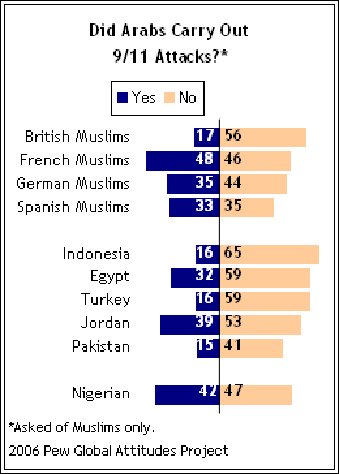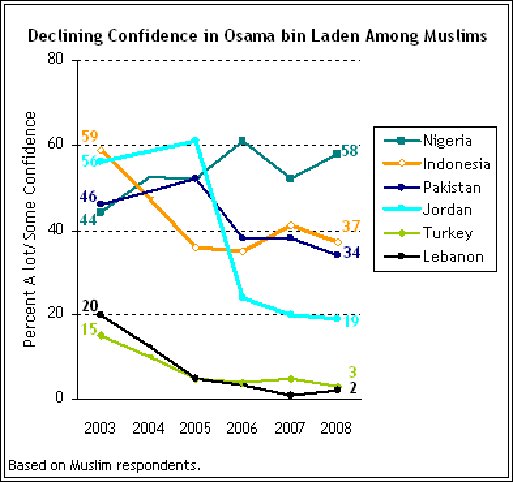
Back story
I went to see the new James Bond movie, Quantum of Solace. It is not as good, IMO, as the old Bond movies because Bond has lost his edge, or more correctly, the rest of us have caught up. In one scene, Bond calls back to his HQ for a name check. After a couple seconds, the super spy commuter comes up with a picture of the miscreant. Very impressive, but you or I could come up with the same result on Google Images in around 0.9 seconds. Bond would have been better off just using his I-Phone himself. This is the new world of communications.
Web 2.0/PD 2.0
Initial use of the web for public diplomacy and strategic communications involved online versions of familiar delivery methods, such as magazines, radio and television. Despite vast differences among them, all these shared the paradigm of one-way communications, where a set message was delivered to a passive audience in a one speaker to many recipients model. It ignored the web’s special capacity for interaction. Web 2.0 refers to the way the web has changed the nature of communications, making it interactive, more fluid and less centrally organized. Last year, Internet passed newspapers as a source of news in the U.S. For young people Internet is beginning to rival television. [1] This new world can make many people in governments or powerful institutions uncomfortable, since it signals a diminution of their power over information and a dilution of their messages.
We tend to focus on the instant communication aspect of the Internet, but the sinews of its influence are its capacity to find, sort and distribute information. Powerful search engines give individuals the power enjoyed only by world leaders few decades ago and before that time by nobody at all. Governments have lost what monopolies they once enjoyed and are now sometimes not even the most prominent voices. Controlling information is no longer possible. On the other hand, there is a greater opportunity for engagement to harness the power of the nation and the wisdom of the crowds to produce better and more robust products. There is no option of ignoring the development. Internet users demand a degree of interactivity and accept a measure of ambiguity unpredicted a decade ago. These trends will accelerate as the first generation of digital natives (i.e. kids who don’t remember a world w/o Internet) has reached adulthood. This is the new world of communications. Whether we are ready or not, the future has already arrived.
Interactivity and interrelations
The two concepts to keep in mind are interactivity and interrelatedness. The first concept is more obvious but the second is more pervasive. Internet users ostensibly love the possibility of interactivity, but most don’t use it to an extent commensurate with their stated preferences. On any blog, there are dozens, hundreds or thousands of “lurkers” for every active participant. On the other hand, interrelatedness represents the fundamental power of the Internet and its search engines. It is the interrelatedness – the unexpected relationships – that makes the Internet such a wonderful and terrible place to do public affairs. Some say the web provides a venue for the best and the brightest to share ideas w/o the constraints of status or station; others contend it is a place where peculiar people congregate to accrete one dumb notion on top of another. Both points of view are correct. The medium of free and often anonymous exchange produces the best and the worst as it emphasizes people on the long tails of the normal distribution.
Mass customization
The ubiquity and interactive aspects of Web 2.0 offer public diplomacy the possibility of direct engagement with thousands of individuals on a global scale. We can bypass the state run media and the various despotic gatekeepers that have long hounded the quest for truth & knowledge. In the exchange, however, we get a world of constant change, requiring flexibility and creativity, where you have to earn attention again and again every day. The interactivity means just what the word says. When we are trying to influence others, we need to open the possibility of being influenced by them. In a free marketplace of ideas, this would be all to the good. It would produce a synergy greater than the sum of the parts. The caveat is that this marketplace of ideas is not as free and open as it would appear.

Our own presence in the mix is the first sign of a constrained freedom. Although our opponents disagree, our activities are generally benign and broadly truthful. The USG is constrained to tell the truth by its own rules as well as the continual monitoring by our own free media, interests groups and political leaders in opposition. For the most part, we are probably too timid in the defense of our positions. Not so our adversaries. Most of them are heavy handed and incompetent peddlers of web influence, but there are so many out there that some get it right sometimes and others get it right a lot. When it works for them, their campaign is based on plausible lies, ones that play to stereotypes and prejudice, and often based on caricatures and exaggerations of our own real and verifiable mistakes and missteps. In a world where significant numbers of people doubt that there was ever a moon landing and where in communities where majorities don’t think Arabs were responsible for the 9/11 attacks, conspiracy theories go a long way. And the U.S. is probably the single biggest victim of conspiracy theories. In a world often driven by dispersed impersonal forces, people look for someone to blame. The U.S. is always there for that purpose.
Countering conspiracy theories with facts and information is futile. Most conspiracy theories have a built in defense against such quaint ideas as truth or fact. They are, after all based on “hidden,” “denied,” “secret,” or “occult” information. True believers in conspiracies derive significant personal status and feelings of self worth from the idea that they know things overlooked by or kept from the masses of people. It is a true Gnosticism. As they see it, any counter arguments are merely examples of clever attempts to discredit them. We have to recognize that some people are incurable conspiracy theory believers. Others are susceptible to the contagion, but can be cured, but through relationships, not information alone. A trusted and credible source of the information is what makes the difference. Web 2.0 provides the opportunity to create such relationships.
In a New World Where Nobody is Well-Loved

We also need to recognize that the constant vetting and finding of flaws, even when done honestly, will create a permanent state of dissatisfaction among large numbers of people. This is what happens when campaigns go negative and it is just easier to go negative than to defend a positive position. The U.S., as the most ubiquitous presence in the history of the world, will naturally come under the most scrutiny, fair and foul, but it is a general trend that affects everybody. The good new in this is that it applies to our adversaries as well as to ourselves. Al Qaeda’s popularity has also plummeted in recent years among Muslims, for example. [2]
Insiders & Outsiders
Internet 2.0 will strengthen “tribes” as people can go online to find others with whom they identify even across great geographical distances. (Of course, the tribes I am not talking about are not kinship of linage, but kinship of ideas.) This may lead to greater trust within groups, as they become more uniform and homogeneous, but also lead to a general decline in tolerance overall, since most people will be out-groups to any particular in groups. Early hopes that Internet would weave the world together in a kind of cyber age of Aquarius have been dashed against the reality of self-selection and segregation. In a mass information market, differing viewpoints must be tolerated, not so in the case of core groups of believers autoerotically communicating among themselves on the Internet. Where websites and blogs are most developed, disagreements have become sharper and more venomous. However, the impersonal/personalization of web interactions allows people with very divergent views to coexist and performs mutually beneficial transactions that would be impossible in a face-to-face world. General “approval ratings” have already become more transactional and unstable, making it even more important to discount what people tell opinion pollsters and watch what they do and get an idea of their true beliefs by their revealed preferences.
Public diplomacy and the marketing mix
The analogy of public diplomacy with marketing is far from perfect, but it provides some useful insights. When marketing a product or service, you have to understand which communications techniques are appropriate. Those useful for selling Coca-Cola are often not valuable for selling passenger jets or legal services. The same goes for public diplomacy. Our business is more analogous to selling high end legal services than consumer products. This informs and constrains our choices.
Public diplomacy involves communicating complicated concepts to people who come from a variety of backgrounds and the U.S. operates in a truly global environment. It involves long term relationship and trust building. Messages are more problematic. Some of our world audiences will react in sometimes violently different ways to the same subject. Imagine the discussion of U.S. attitudes toward same sex marriage at venues in Amsterdam and Jeddah. Aspects of the discussion popular in one venue would be odious in the other. In this interconnected world, messages cannot be neatly targeted to a discrete audience. Even more challenging is that the more extreme members of each audience will seize on the aspects they find most objectionable rather than look for areas of compatibility. This has long been a problem, but web 2.0 exacerbates it, since one blogger in an audience of hundreds can characterize a discussion for thousands of his compatriots back home.
In other words, web 2.0 has as much or more capacity to puncture and disassemble public diplomacy messages as it does to deliver them. The shorter the attention spans media, the more likely this is to be the case. Twitter with its 140 character limit is a good example. We have used Twitter successfully to send short messages and a give a “heads up” about bigger things, but it doesn’t easily lend itself to any proactive public affairs task beyond notices and reporting the equivalent of scores or stock averages. One the other hand, 140 characters is plenty of space for a slogan or attack. BTW – the last two sentences of the paragraph above had 327 characters counting spaces. These two directly above are 140 characters – exactly the right size for a tweet. Good luck with deep explanations.
So what do we do?
We look beyond or through the technology to our purpose. You cannot answer the how question until you have address they why question. Communication and relationship building is our goal. Rather than be beguiled or intimidated by technology, we simply need to keep our focus on the goal and use whatever technological tools are most appropriate. But we do need to acknowledge that changing technologies have changed the game.
Common themes not unified messages
There is much talk in public affairs about having a unified message. The new technologies, with all the links and leaks they entail in the information net, mean we can no longer have one unified centrally crafted message. We can have themes and goals that are interpreted and alerted by the individuals on the ground and closest to the challenges. We will, however, need to tolerate significant local variations on the themes and welcome the ambiguity of message delivery.
Delivering variations on the themes is much more labor intensive than cranking out a single message because rather than one voice speaking to millions (on the model of the national television program) we will have many voices speaking to thousands or maybe even to hundreds and not only varying the theme to suit particular audiences, but also responding to them and quickly responsive to changes in the environment. It is important that the theme be consistent but the delivery is protean. It requires more of a robust process than a comprehensive plan.
Set the Proper Goals for Each Situation
There are many degrees of distinction between active opposition and enthusiastic support. Americans are particularly afflicted by the desire to be loved in the world, but all that is often required is compliance or even indifference. Although outright opposition constrains our policy options, America’s image in the world has no discernible impact on the sale of U.S. goods or the acceptance of U.S. cultural products. Much of the sound and fury of anti-American prejudice signifies nothing or not very much. The fragmentation of media on the web means that those who dislike us will always have an outlet for their vitriol and they will probably be among those yelping the loudest. The majority may not have a strong opinion on a particular issue. They may voice support for our opponents, but take no steps to provide anything practical.
Military action, which by its very nature is coercive, will almost never be popular and any exercise of power, which inevitably means choosing among priorities, will annoy somebody. Since you usually get less credit for the good things you do than blame for the bad, any use of power will probably create more perceived losers than winners. (The world’s superpower is always on the hot seat. President Clinton gets blamed for not sending troops to Rwanda; President Bush is excoriated for sending troops to Iraq.) Lack of practical support for extremism and neutrality or even indifference toward our policies among the mass of a country’s people may be sufficient to accomplish our purposes. Often neutralizing or discrediting opposition will be the most appropriate tact, and Internet is well suited to this task. We should consider this on a case-by-case basis, rather than compromise practical goals by pursuing the chimera of seeking full throated outright approval.
All of the above
Using technology to communicate will be an all of the above proposition, with a cocktail of technologies usually more appropriate than reliance on any one. We will never find the Holy Grail or silver bullet of communications technology and we will never again have anything comparable to the nationwide television network where everybody is watching at the same time. The ability to reach the whole nation was a historical anomaly. Throughout most of history and in the future, the communication environment was and will be fractured. It is only because we all grew up in that unusually homogeneous media environment that we think of it as normal in any way.
The right tools
We cannot prescribe the particular technological tools for any public affairs task until we have assessed the task and the environment. What we should be looking for is synergy among the tools. For example, a live speaker is very compelling but not particularly memorable, while an internet page has the built in memory (you can refer back to it) but is unlikely to be compelling. Twitter can announce the availability of some piece of information or some event, but it cannot explain the nuances. An event might be very informative, but nobody comes unless they can be told and reminded. Obviously a combination of technologies works best, changing them to adapt to circumstances. BTW – technology is not only high tech or electronic. A technology is merely a way of doing something. A personal meeting is a kind of technology. Sometime the thousands year old technology is the way to go. We seek the right MIX of technologies, not the right ONE technology. There is no silver bullet or Holy Grail of communications. It is easy to be beguiled by the new or the latest big thing, but technology is not communication and the medium is not the message. It is only the method.
———————–
1. Internet Overtakes Newspapers as News Source, Pew Research (http://pewresearch.org/pubs/1066/internet-overtakes-newspapers-as-news-source)
2. Global Public Opinion in the Bush Years (2001-2008) (http://pewglobal.org/reports/display.php?ReportID=263)
Other References
The Future of the Internet III, Pew Research (http://pewresearch.org/pubs/1053/future-of-the-internet-iii-how-the-experts-see-it)
Other information is based on personal interviews with those doing public diplomacy as well as extensive personal experience working with USG webpages and blogs.
